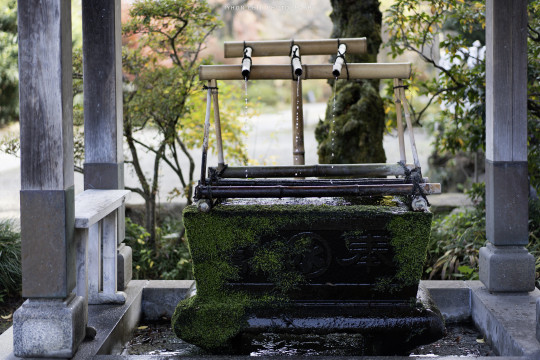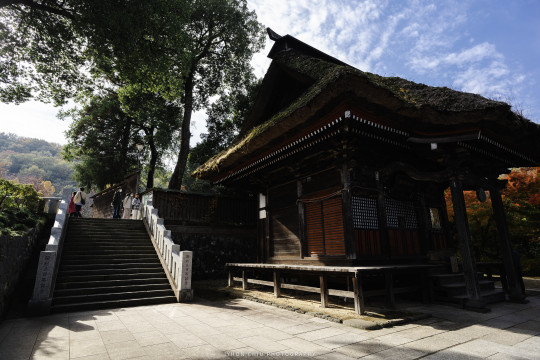#chozubachi
Explore tagged Tumblr posts
Text





高崎市・少林山達磨寺 ∣ Shorinzan Darumaji・Takasaki City (2) (3) (4) (5) by Iyhon Chiu
3 notes
·
View notes
Text

Zaigaji temple, Japan - Le Psi, November 2021
A chozubachi (手水鉢), or water bowl used to rinse hands at temples and shrines

Another view by ありがっ様 - August 2021
2 notes
·
View notes
Photo

[ 雨色手水 ] . . . 鮮やかな雨の花うかぶ、 お寺の手水鉢。 . . . ==================== 📸 2021.06 Eshin-in, Uji, Kyoto . Nikon D5300 💠🍃💠🍃💠🍃💠🍃💠 ==================== . . . #japan #kyoto #eshinin #eshinin_hydrangea #eshinin_hanachozu #eshinin_chozubachi #chozubachi #eshinin_tsukubai #tsukubai #京都 #恵心院 #恵心院_紫陽花 #恵心院_アジサイ #恵心院_あじさい #恵心院_花手水 #恵心院_手水鉢 #恵心院_つくばい #雨季に色めく紫陽花 #bloom_of_hydrangea_in_rainy_season #花が咲くお寺 #flowers_bloom_in_the_temple #花彩る手水 #flower_colored_chozu #庭園にこだまする水の音 #the_water_sound_echoes_in_the_garden #adobephotoshoplightroom #nikond5300 #instagram #photo #photography (恵心院) https://www.instagram.com/p/CSyuYV3JIlT/?utm_medium=tumblr
#japan#kyoto#eshinin#eshinin_hydrangea#eshinin_hanachozu#eshinin_chozubachi#chozubachi#eshinin_tsukubai#tsukubai#京都#恵心院#恵心院_紫陽花#恵心院_アジサイ#恵心院_あじさい#恵心院_花手水#恵心院_手水鉢#恵心院_つくばい#雨季に色めく紫陽花#bloom_of_hydrangea_in_rainy_season#花が咲くお寺#flowers_bloom_in_the_temple#花彩る手水#flower_colored_chozu#庭園にこだまする水の音#the_water_sound_echoes_in_the_garden#adobephotoshoplightroom#nikond5300#instagram#photo#photography
1 note
·
View note
Photo



Clear tsukubai/chozubachi (stone wash basins find in tea gardens or shrine and temples) and cute swimming golfishes wagashi (japanese cakes), by @wagashi_sanchan
I love the cookie cutter they use for the fishes!

#japan#food#wagashi#japanese cake#japanese sweets#Tsukubai#chozubachi#stone wash basin#kingyo#goldfish
212 notes
·
View notes
Video
tumblr
Did you know? Chōzubachi is a water basin where you purify yourself before you enter a shrine or temple in Japan
Video by jp.travelers.pic via Your Japan
#chozubachi#flower#shinto shrine#buddhist temple#japanese shrine#japanese temple#japan#japanese culture#japanese tradition#beauty of japan#travel to japan#japan travel#your japan
5 notes
·
View notes
Photo

手水鉢に彼岸花の花飾り...( ̄∀ ̄)エエネ #彼岸花 #ヒガンバナ #曼珠沙華 #手水鉢 #手水鉢に花 #横浜 #西方寺 #みなとみらい線フォト散歩 #東京カメラ部横浜分室 #横浜カメラ部 #myyokohama #lycoris #redspiderlily #hurricanelily #redmagiclily #yokohama #saihouji #saihoutemple #amaryllis #chozubachi #washbasin #ig_japan #igersjp #instagramjapan #写真好きな人と繋がりたい (西方寺) https://www.instagram.com/p/CFrBquagxlA/?igshid=kt3jjh7mwvkv
#彼岸花#ヒガンバナ#曼珠沙華#手水鉢#手水鉢に花#横浜#西方寺#みなとみらい線フォト散歩#東京カメラ部横浜分室#横浜カメラ部#myyokohama#lycoris#redspiderlily#hurricanelily#redmagiclily#yokohama#saihouji#saihoutemple#amaryllis#chozubachi#washbasin#ig_japan#igersjp#instagramjapan#写真好きな人と繋がりたい
1 note
·
View note
Photo

FOTO SHASHIN - July 1, 2019 - A chōzubachi (water basin) on the outskirts of Nagiso. In Japan along the Nakasendo Trail.
by HikerEyes
5 notes
·
View notes
Photo

Jumy-M
Mizubachi / 水鉢
223 notes
·
View notes
Conversation
蹲 (つくばい)
Translation: a specific type of hand-washing basin (手水鉢) that is smaller and low to the ground, used exclusively in tea gardens
1 note
·
View note
Text

Chōzuya
A chōzuya or temizuya is a Shinto water ablution pavilion for a ceremonial purification rite known as temizu. Water-filled basins, called chōzubachi, are used by worshippers for washing their left hands, right hands, mouth and finally the handle of the water ladle to purify themselves before approaching the main Shinto shrine. Originally, this purification was done at a spring, stream or seashore and this is still considered the ideal.
19 notes
·
View notes
Text

A tsukubai is to be found in a tea garden and is formally composed of a wash basin, chouzubachi and Yaku-ishi, a number of special purpose stones. It has a background and often a garden lantern, tourou or more often as ishi doro. The term tsukubai refers to the whole of this composition as such. The tsukubai or crouching bowl, literally "stooping basin" was designed to humble guest and create the right state of mind before guests joined the tea ceremony. Many Japanese gardens today have both the chozubachi and tsukubai and are often fed with water from a bamboo spout called "kakei".
In Japan, a tsukubai is a washbasin provided at the entrance to holy places for visitors to purify themselves by the ritual washing of hands and rinsing of the mouth. This type of ritual cleansing is the custom for guests attending a tea ceremony or visiting the grounds of a Buddhist temple. The name originates from the verb tsukubau meaning "to bow down", an act of humility.
Tsukubai are usually of stone, and are often provided with a small scoop, laid across the top, ready for use. A supply of water is provided via a bamboo pipe called a kakei.
<><><><><><><><><><><><><>
Sanzenin Temple is the main attraction of the rural town of Ohara, which is located about an hour north of central Kyoto. The approach from Ohara bus stop to Sanzenin is lined with shops and restaurants catering to temple visitors, and there are a number of smaller temples in the vicinity. Sanzenin Temple itself has large temple grounds and a variety of buildings, gardens and walking paths.
Sanzenin is a temple of the Tendai sect of Japanese Buddhism and was founded by nobody less than the revered monk Saicho who introduced Tendai Buddhism to Japan in 804. Sanzenin is a monzeki temple, one of only a few temples whose head priests used to be members of the imperial family.
A tranquil atmosphere permeates the garden, and there are a number of amusing stone statues that peek out from the moss.
40 notes
·
View notes
Photo


"Ueno Gojo Tenjin" (Watanabe Woodblock Art Painting Collection), a print by Shiro Kasamatsu. Gojoten Shrine in Ueno Park. The night time zone is expressed with an indigo gradation. The Chozuya in the foreground still remains, and you can also see the chozubachi that imitates a lotus flower. It is on display at the Ota Memorial Museum until March 28th."
108 notes
·
View notes
Photo

Hydrangeas in Chozubachi by Yukihiro Yamashita
279 notes
·
View notes
Photo



Chozubachi (washbasin) beautifully ornated with gradient maple leaves, shot by chacha_nene_jp
3K notes
·
View notes
Text
Makoto - Purification

(February Writing Challenge -- Erdenechimeg is @gorgagne-viperidae.)
The Komorebi temple was small and kitschy, not at all the sprawling open-air sort of temple that Makoto’s father used to take him to on the outskirts of Kugane, where the massive torii gates stood like open doorways to nowhere. At first he was disappointed by the lack of mysticism, wondered if maybe coming here was the wrong idea. Could the kami--always a tenuous concept to Makoto to begin with--even be this far from home, here in this house across the Ruby Sea?
Bringing Erden to the shrine was probably a mistake, but if Makoto was going to dip his toes into sober, honest negotiation with the spirits, he needed an anchor. A guide. Someone who knew even less about this than he did, so that the kami would look at Makoto and, for once, see someone who wasn’t the least competent person in the room.
Makoto’s agnosticism was, blessedly, short-lived. Even on the other side of the world, the spirits always saw Makoto for exactly what he was: low-hanging fruit, ripe for the plucking. A fool, but an honest one.
It started with slow rivulets of disorientation. As Makoto approached the chozuya, the light bubbling of running water sent cold trickles down his ears, through his throat, and over his sternum. Some unseen entity squeezed his heart with an icy fist and pulled it with a crinkling crunch right out of place and time, depositing him smoothly back into the shrine of his youth. Kugane, almost twenty years ago. He wore robes too big for his six-year-old frame, and the matronly old priestess whom Makoto’s father kept on a spiritual leash taught him with great patience how to make himself presentable for the kami. A cold, gentle stream of running water, numbing his small fingers and wetting the hems of his comically large sleeves.
It took time for the insidious truth to sink in--that he wasn’t clean just as he arrived, that there was some indelible stain on his hands that he carried with him always.
His vision blurred, the past layering seamlessly with the present, and for a moment Makoto existed in both places, his body bridging decades from the force of his nostalgia. It was Erdenechimeg’s footsteps behind him that pulled him back, planting his feet in the present moment. He filled only his current body, taller, stronger, but equally awkward in traditional dress. The older, wiser Makoto had chosen a tunic without sleeves, one that aired out his ink, his stain on full display. But at least they wouldn’t drag in the water.
“You have to wash yourself first. We’re unclean.” The voice that came out of his mouth wasn’t quite his own, and his hand was still guided by the memory of Priestess Chiyo, plucking a wooden ladle from the stack next to the basin.
Makoto looked over his shoulder at his companion, a walking mountain of crisp judgement who hovered nearby, rendered out of place only by his own quiet discomfort at their surroundings. This delicate house of the spirits made Erden--at almost seven fulms tall--look both recklessly, impossibly large and cosmically, insignificantly small with his uncertain, lowered eyes.
Oh, this was new. The humbleness in Erden’s posture didn’t match anything in Makoto’s catalogue of experience with the man. He looked down at Erden’s hands, curled into loose fists at his sides, which had just as easily pressed searing thumbprints into his throat, broken his skin by personal request and sparking temper alike. Makoto’s stain was all over these large brown palms, backed with black scales. Unclean, by the virtue of Erden’s profession, and by association with him. “More than most, probably,” he added on an exhale.
The ladle plunged into the chozubachi, rippling Makoto’s reflection in the water. Yes, this was a kindness that he could do. He could show Erden how he was taught to purify himself. The blind leading the blind, the reprobate leading the repressed. They could fail together at getting it exactly right. If the fist still gripping his heart was any indication, the kami would greet them as they were.
#ffxiv#ffxiv rp#mateus#mateus rp#crystal rp#february writing challenge#makoto matsuoka#erdenechimeg kha#IC post#komorebi#seafoam
17 notes
·
View notes
Photo

後ほど一時的に広島へ帰って1日だけ仕事してまた宮崎へ帰ってきます。道中無事に過ごせるように宮崎神宮へお詣りしてきました。ここを訪れるとホッと落ち着いてスッキリとした気持ちになれます。御手水も苔むしてスゴく風情があり涼しい気持ちになれました。また12日帰ってきたら無事な事を報告にお詣りしたいと思います。 Later, I will temporarily return to Hiroshima to work for one day and then return to Miyazaki. I visited Miyazaki Jingu Shrine so that I could spend my time safely on the road. Visiting here will make you feel relaxed and refreshed. The moss-covered chozubachi water has a wonderful atmosphere and made me feel cool. I would like to report that I am safe when I come back on the 12th. #宮崎神宮 #宮崎市 #雲一つない空 (宮崎神宮) https://www.instagram.com/p/ChCA0KsJwOVHTOBaFHXQvMun3aJPB21M6817Cg0/?igshid=NGJjMDIxMWI=
0 notes